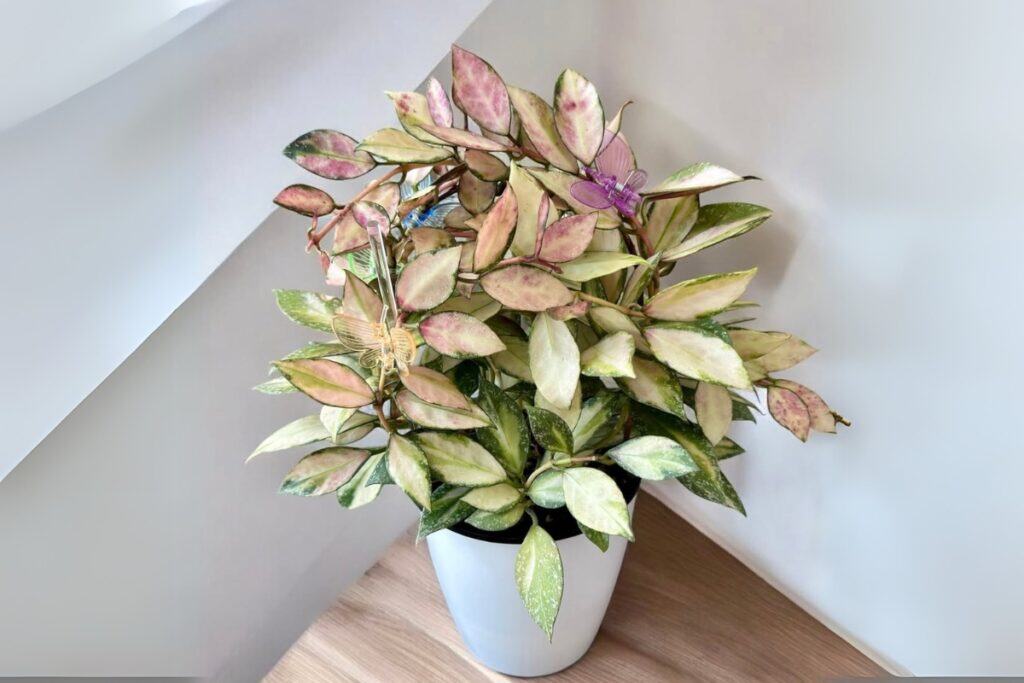Hoya enthusiasts often wonder why some plants flourish for decades while others decline within years. The difference isn’t luck—it’s understanding these tropical beauties’ specific needs and growth patterns. Most people make critical mistakes during the first two years, unknowingly shortening their plant’s potential 30+ year lifespan. However, once gardeners master the essential care techniques, their Hoyas transform into stunning, long-lived specimens that become family heirlooms.

Contents
- 1 Understanding Hoya Lifespan and Growth Potential
- 2 Creating the Perfect Environmental Conditions
- 3 Mastering Watering and Nutrition Techniques
- 4 Choosing the Right Soil and Repotting Schedule
- 5 The Importance of Plant Stability and Placement
- 6 Strategic Pruning for Health and Longevity
- 7 Species-Specific Care Requirements
Understanding Hoya Lifespan and Growth Potential
While many houseplants struggle to survive beyond a few years, Hoyas defy expectations by thriving for decades when given proper care. These tropical semi-succulents can live upwards of 30 years, with some specimens being passed down through generations. The Apocynaceae family includes over 500 Hoya varieties, each with unique growth potential based on their native Asian and Australian habitats.
What’s remarkable is that healthy Hoyas can theoretically grow indefinitely. However, neglect drastically shortens their lifespan to just a few years, making proper care absolutely essential for revealing their impressive longevity.
Creating the Perfect Environmental Conditions

The secret to revealing those impressive three decades of Hoya life lies in mastering their environmental preferences. Light exposure makes or breaks these tropical beauties, requiring one hour of direct morning sun while protecting them from scorching midday rays that cause leaf burn.
Humidity levels should mimic their native Asian and Australian habitats. These semi-succulents thrive in stable conditions, so choose their spot wisely and resist moving them around. Location changes stress plants, causing yellowing leaves and stunted growth.
Well-draining soil prevents root rot, their biggest enemy. Use orchid or succulent mixes amended with bark for proper aeration.
Mastering Watering and Nutrition Techniques
Since Hoyas store water in their thick, waxy leaves, they’re surprisingly forgiving when it comes to watering schedules. Check soil moisture before watering—stick your finger one inch deep into the soil. When the top layer feels dry, it’s time to water thoroughly until excess drains out.
Proper watering frequency typically means weekly watering during growing season, less in winter. Never let plants sit in standing water, as this causes root rot.
For nutrition, feed with balanced fertilizer containing equal NPK values during spring and summer months. This nutrient balance supports healthy growth and longevity.
Choosing the Right Soil and Repotting Schedule
Although Hoyas aren’t particularly fussy about soil composition, choosing the right mix makes the difference between a thriving plant and one struggling with root rot. Well-draining soil types like orchid mix, succulent blends, or amendments with bark and perlite work best. These tropical semi-succulents hate waterlogged roots.
Young plants need annual spring transplants, while mature Hoyas prefer staying root-bound for three years. Strategic repotting techniques involve rejuvenating degraded soil every 3-4 years rather than sizing up containers. Spring timing minimizes transplant shock, and proper drainage prevents the root rot that cuts lifespans short.
The Importance of Plant Stability and Placement
One simple relocation can transform a thriving Hoya into a stressed, yellowing mess within weeks. Plant stress from frequent moves disrupts growth patterns and weakens root health considerably. Environmental stability matters more than finding the “perfect” spot initially.
Once you’ve established a prime location with consistent light exposure and humidity levels, resist the urge to relocate. Temperature fluctuations from moving between rooms create unnecessary stress that stunts development for months.
However, don’t hesitate to move your Hoya if it’s clearly struggling due to inadequate conditions, poor growth, or obvious environmental issues.
Strategic Pruning for Health and Longevity
When Hoya vines stretch beyond manageable lengths, they’ll actually drain energy from the root system and compromise the plant’s overall health. Strategic pruning techniques involve trimming a couple inches off stems during growing season, typically spring through summer.
Proper pruning frequency means cutting back vines once or twice annually, never more. This prevents excessive weight on roots while maintaining compact growth. Remove damaged or diseased stems immediately, regardless of season.
Focus cuts just above leaf nodes to encourage new growth. Clean, sharp scissors prevent tissue damage and disease transmission, keeping your Hoya thriving for decades.
Species-Specific Care Requirements
Beyond universal pruning principles, each Hoya species brings its own care personality based on where it evolved in nature. Species adaptations determine whether your plant craves bright light or tolerates shade, influencing light preferences considerably. Hoya carnosa handles drought well, while Hoya bella demands consistent moisture, showcasing different watering needs. Temperature tolerance varies too—some thrive in cool conditions, others need warmth. Humidity levels, growth rates, and pest susceptibility differ among varieties. Flowering habits also vary dramatically, with some blooming annually while others take years. Research your specific variety’s native habitat to reveal ideal care strategies.
